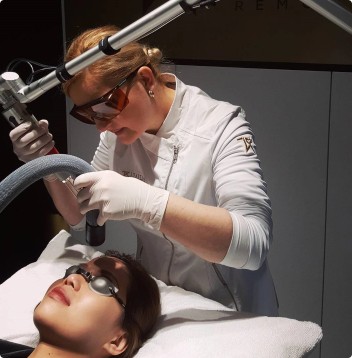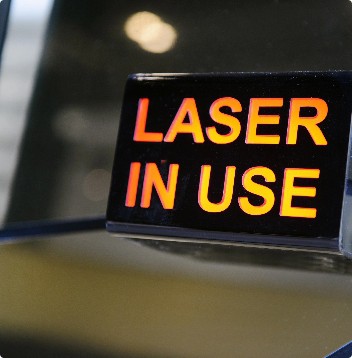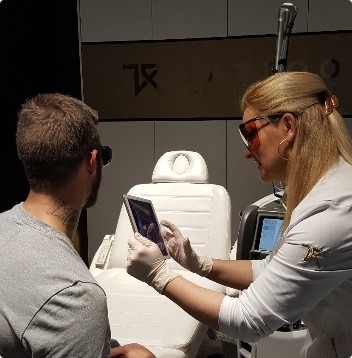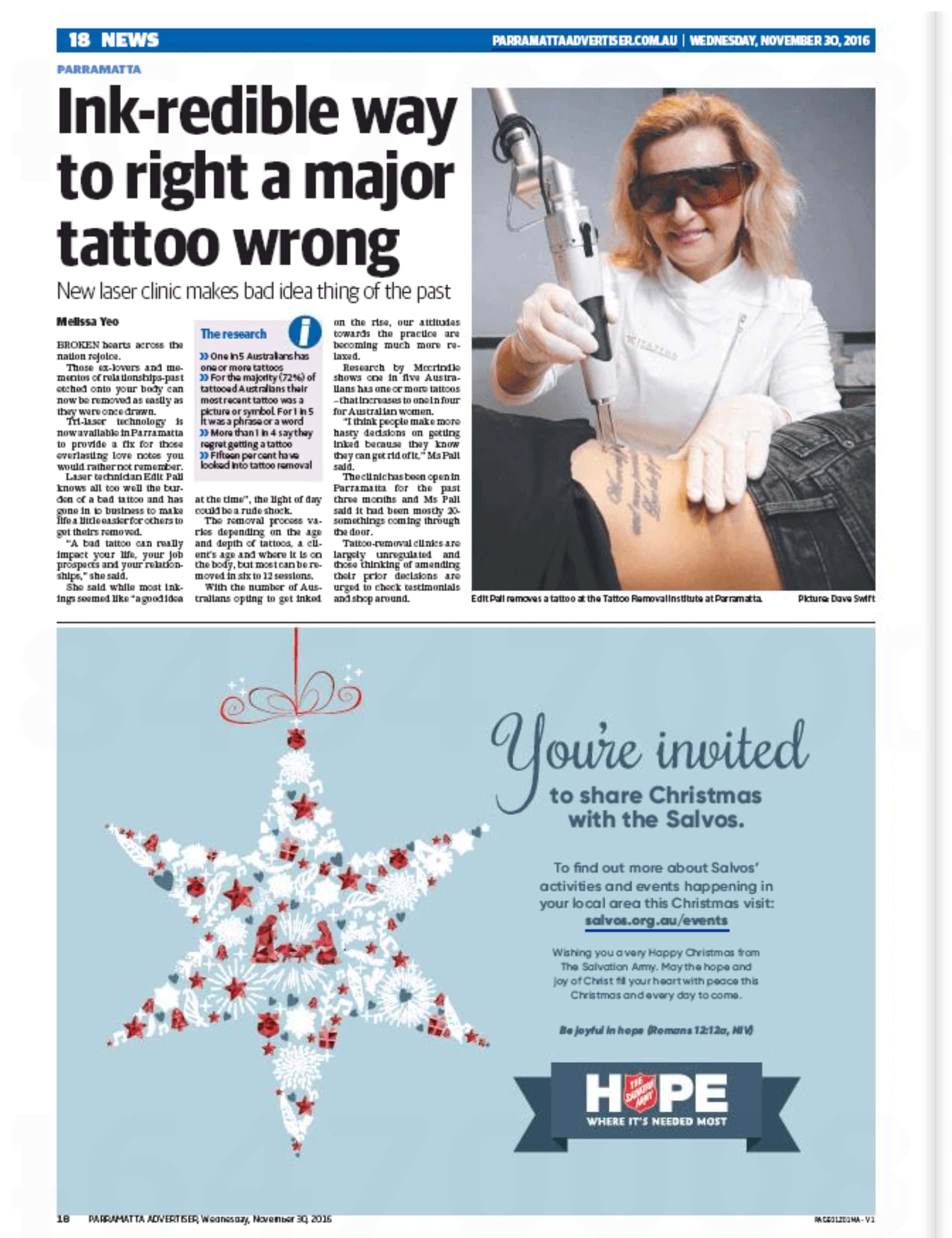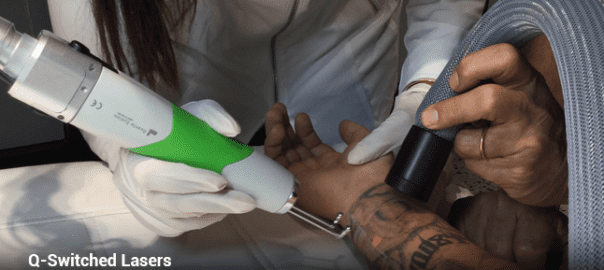

The Tattoo Removal Process
Contrary to what many people might think, tattoo removal is not an easy, quick fix treatment, but rather a complex process that requires time and patience. Multiple sessions are normally required for the removal to be effective and successful, and for most patients this can take anywhere between 4 to 12 or more treatments. The number of sessions needed depends largely on various factors such as; your skin type, the tattoo’s location on the body and its actual size; the ink density and colors used; and whether the tattoo was professionally done or created by an amateur. For instance, patients with very large and more elaborate tattoo designs might require a two-phased treatment plan so as to ensure best results.
It is extremely important to have the tattoo removal process carried out by reputable professionals only, who can ensure that your skin is safely reinstated back to its natural state through proper treatment and care. That’s because, when tattoo removal is done professionally, proper pre and post treatment skin care protocols are strictly followed. These protocols are very essential because they ensure that complications such as infections, unwanted side effects, and skin texture change are avoided. In addition, when proper treatment and care is utilized, it reduces the risk of possible scarring.
Technology Used In Removal
Thanks to advances in laser and light-based technology, the techniques used in tattoo removal today are much safer, less intrusive, more effective, and have fewer complications if any. In earlier days, the removal methods applied were quite destructive, as they all had the potential to cause permanent scaring and damage, and more often than not, they would result in incomplete removal. These were techniques such as...
DERMABRASION
Which involved “sanding” away the skin to remove the top and middle layers
EXCISION
Where the tattoo was surgically cut out by a dermatologic surgeon, after which the wound was closed up with stitches
CRYOSURGERY
which involved freezing the tattoo area before its removal
Currently, laser technology is perhaps the most preferred method for tattoo removal and is widely regarded as the most effective way to remove tattoos. This advanced technique involves the use of a laser machine to produce short pulses of intense light, which harmlessly penetrate the skin’s top layers and is then selectively absorbed by the pigment in the tattoo. The laser energy causes the tattoo pigment to break into tiny particles, which over time are disposed of by the body through its immune system.
Technologies Used In Tattoo Removal



